Haddon Hall, perhaps the most simple and understated of English stately homes, is also one of the finest medieval manor houses in Britain. Nestled in the heart of the Peak District National Park, it certainly enjoys a picturesque setting, two miles south of Bakewell (known for its eponymous tarts) on the banks of the River Wye. In the mid-twelfth century the hall passed from its Norman founders to the Vernon family, who owned it for four hundred years until the most famous event in its history occurred. In 1558 the sole remaining Vernon heir, Dorothy, married John Manners, scion of another powerful family who later became Dukes of Rutland. Their union is commemorated in their joint tomb in Bakewell church, but the romantic story of their elopement may be apochryphal. Dorothy Vernon was 18 at the time and it is said that the couple eloped during the wedding of one of her sisters. There must have been some sort of reconciliation, as Dorothy and John later became owners of Haddon Hall. The hall has been owned by the Manners ever since then, but curiously enough has never been sold. The mansion fell into two hundred years of neglect from the start of the eighteenth century until the 9th Duke began restoring Haddon Hall when he moved there in 1912. No one quite knows the reason for the building’s neglect and seeming lack of interest to buyers – although this may have something to do with the fact that the ghost of Dorothy Vernon is said to appear there on a regular basis, usually seen on the steps leading up to Haddon Hall, as if being chased.
 The ghosts of Haddon Hall are by no means the only hauntings associated with this part of Britain. The Peak District is an area of outstanding natural beauty, rugged and steeped in mystery. Nowhere else in England boasts such a diverse landscape, untouched by industry and unspoiled by the crowds of visitors attracted to its windswept expanses each year. Not many realise that the pretty, picturesque Peak District is a bastion of pagan traditions, some of which date back to Pre-Roman times. For once the moors and highlands were ruled by the Brigantes – a powerful Celtic tribe – and the many circles of standing stones dotted around the area bear mute testimony to a past dedicated to worship of their strange old gods. Many of the surviving pagan rituals in this corner of Britain seem to be linked to water in some way. Many Peak villages are known for their practice of well-dressing, a rite of thanksgiving for water that is observed throughout the summer. This practice is an echo of distant times when wells were seen as gateways to the otherworld. Perhaps such links to the past are part of the reason why even today the Peak District still maintains an aura of mystery. More UFO sightings take place here than in any other part of England. In the winter ‘the Devil’s bonfires’ are seen flickering in the early hours amid the wild and bleak moorlands. There are deep mountain pools steeped in legend and the village of Eyam in particular, boasts a dark secret.
The ghosts of Haddon Hall are by no means the only hauntings associated with this part of Britain. The Peak District is an area of outstanding natural beauty, rugged and steeped in mystery. Nowhere else in England boasts such a diverse landscape, untouched by industry and unspoiled by the crowds of visitors attracted to its windswept expanses each year. Not many realise that the pretty, picturesque Peak District is a bastion of pagan traditions, some of which date back to Pre-Roman times. For once the moors and highlands were ruled by the Brigantes – a powerful Celtic tribe – and the many circles of standing stones dotted around the area bear mute testimony to a past dedicated to worship of their strange old gods. Many of the surviving pagan rituals in this corner of Britain seem to be linked to water in some way. Many Peak villages are known for their practice of well-dressing, a rite of thanksgiving for water that is observed throughout the summer. This practice is an echo of distant times when wells were seen as gateways to the otherworld. Perhaps such links to the past are part of the reason why even today the Peak District still maintains an aura of mystery. More UFO sightings take place here than in any other part of England. In the winter ‘the Devil’s bonfires’ are seen flickering in the early hours amid the wild and bleak moorlands. There are deep mountain pools steeped in legend and the village of Eyam in particular, boasts a dark secret.
Within a year of September 7, 1665, the attractive hillside lead-mining settlement of Eyam (pronounced “Eem”), seven miles north of Bakewell, had lost almost half of its population of 750 to the bubonic plague, a calamity that earned it the enduring epithet ‘The Plague Village’. The first victim was a journeyman tailor who is said to have released some infected fleas from a package of cloth brought from London into one of the so-called plague cottages next to the church. The ensuing epidemic was prevented from spreading to other villages by a self-imposed quarantine led by the rector, William Mompesson. He arranged for food to be left at places on the parish boundary – such as Mompesson’s Well, where payment was made with coins left in pools of disinfecting vinegar. Although Mompesson himself survived the plague, his wife sadly died – she lies buried in the shadow of a richly carved Celtic cross in the churchyard. Other graves throughout the village stand as a testament to these harrowing times. Indeed, perhaps in no other village in England is the tragedy of the past so manifest in the present, and to this day a mute and eerie stillness hangs over Eyam, unrelieved by time’s passing.

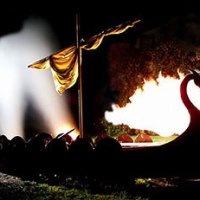





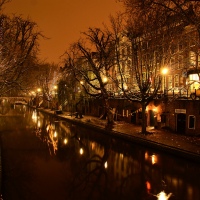


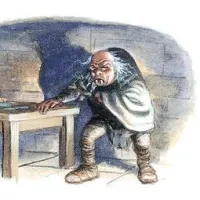
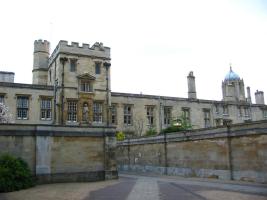


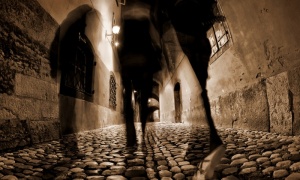


enticing
How very interesting. Thanks!
Reblogged this on Realm of Romantic Mystical Manuscripts and commented:
I enjoy reading about hauntings around the world!!